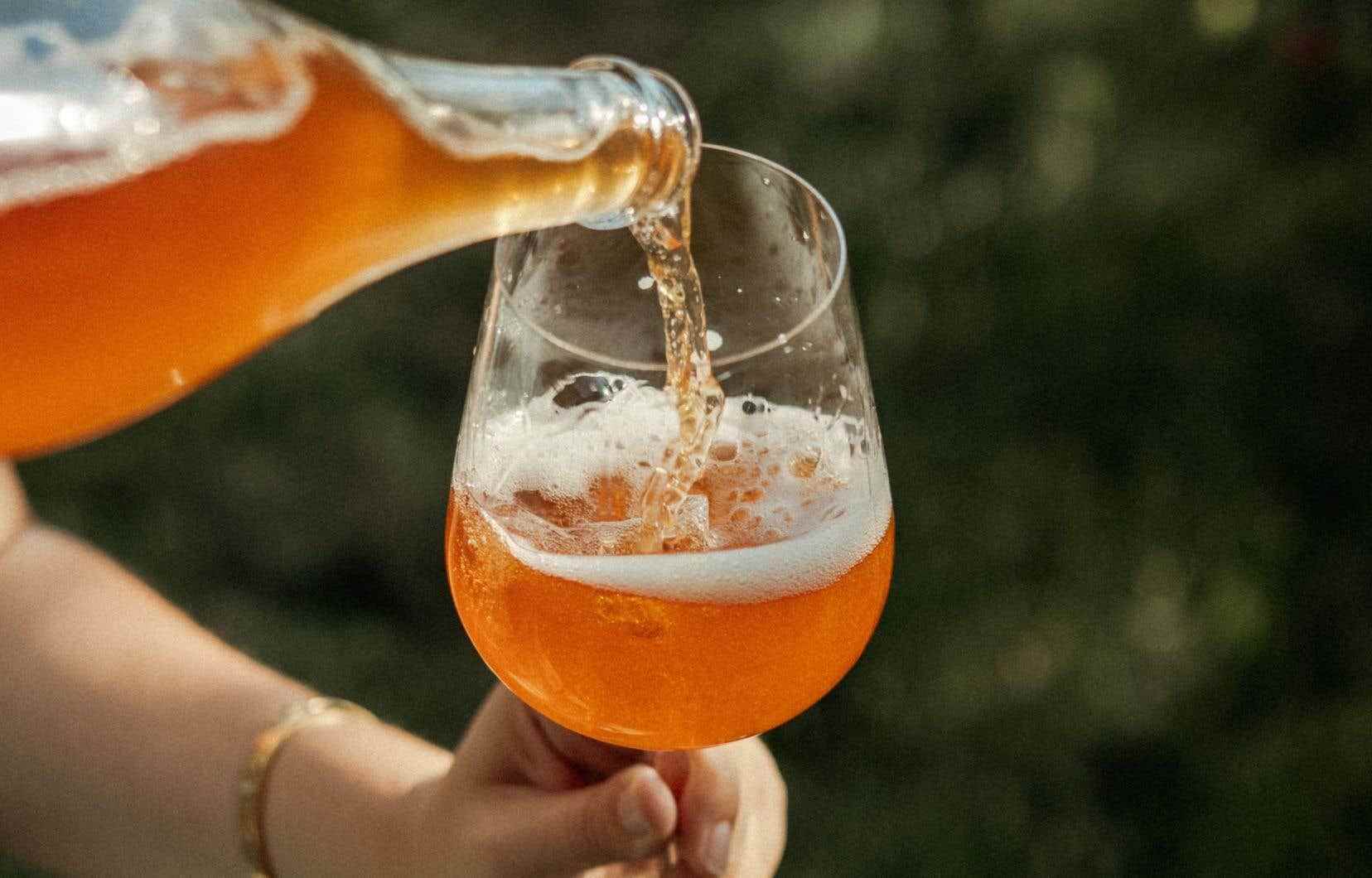This text is part of the special book Plaisirs
After being shunned for a long time, the ciders of our province have become essential. They display their shimmering colors on cans, bottles or in cocktails, and can be enjoyed at the table as in a park or on the terrace. Above all, they emancipate themselves from traditions to embrace new taste avenues. From May 5 to 15, Cider Week is back for a 6and edition, and we can expect a buzzing event!
Some of us remember, with regret, the Quebec cider of the 1970s which gave headaches to those who consumed it because it was of such poor quality. Fortunately, a few pioneers like Michel Jodoin and Christian Barthomeuf, the inventor of ice cider, succeeded 20 years later in gradually restoring the image of a dying industry. Today, the latter generates more than 51 million dollars in sales annually, supports more than 120 producers and impresses us with its constantly growing range of accessible and more niche products.
This renaissance, Étienne Dancosse followed it closely, since he comes from Saint-Joseph-du-Lac, a corner of the Lower Laurentians well known for its apple production. He joined the commercial department of Cidrerie Lacroix in 2016 and has witnessed the explosion of its offer since 2018, particularly in grocery stores, bars and restaurants.
“For me, cider is unifying, jovial and festive. But it’s also a high-quality product and a vector of opportunities for our cider makers,” confides the man who is actively involved as vice-president within the Association des Producteurs de cidre du Québec, which defends and promotes this sector, for example by organizing Cider Week, which will be held from May 5 to 15.
A sparkling diversity
There is no longer one, but many ways to taste Quebec cider. While ice cider and still cider, for example, are consumed less on our market than before, sparkling ciders and cider-based ready-to-drinks have carved out a place for themselves.
Another category is also increasingly attracting the attention of wine and beer lovers. “Farm or natural ciders, which use original production methods and offer different flavor profiles, should be watched,” confirms Mr. Dancosse.
We are here for good, because we are improving the offer of local products. I even believe that we are at the beginning of something big. That specialty ciders will one day be part of our Quebec gastronomic identity.
Cidrerie Lacroix itself produces, alongside its flagship products, a few productions of this type, recognizable by approaches such as spontaneous fermentation, aging in barrels and surprising marriages with other ingredients. “It’s a field full of creative avenues. By playing with the varieties of apples, aging, skin maceration, or even the addition of fruits or herbs, the possibilities are endless! says the entrepreneur.
New cider makers
Choinière, Somnambule, Polisson, Chemin des Sept, Between Stone & Earth, Fleuri. So many names that are today associated with the production of ciders of a new kind. The majority of these craftsmen were not born on apple or agricultural land, and they were not predestined to work in this field. But they have acquired or rented small plots of land for a few years to carry out alcoholic processing.
This is the case of the duo formed by Julien Niquet, the entrepreneur behind the Glutenberg and Oshlag breweries, and sommelier Justine Therrien, who founded Fleuri organic ciders. They originally wanted to produce wine (Maison agricole Joyhill), but as Justine says, “by accident, we came across an orchard, so Julien had the idea of making cider as well. While I, honestly, had no interest in this product before, which I found too one-dimensional”.
Inspired by what was already being done with farm ciders in Europe, they started adding percentages of crabapples to the five varieties of chewable apples they had. “We had no idea what we were doing! Justin admits. But we wanted to obtain quality ciders, drier, with more texture. »
A successful bet since this addition of cheekbones, as well as other processes such as aging in amphora of Terracota, better known in the world of wine, foaming in a can, which allows the cider to finish its fermentation in the container , as well as macerating wild berries with apples and creating blends of grapes, old cider and fruit have become their trademarks.
“At the rate of six or seven batches per year, we have so far created 35 products”, indicates Julien Niquet, who inherited from his brewing know-how the taste for small brews and canning. Fleuri therefore offers nested ciders, which does not prevent it from selling 150,000 liters of cider per year. And to plan its expansion.
Gourmet meeting
Until then, Quebec Cider Week promises a rich program for all fans of classic ciders or funky of the province. Panels, workshops, product launches, 5 to 7, restaurants and shops; but also open doors, tastings and activities in cider houses.
“It’s the perfect opportunity to visit them to make great discoveries and learn how these alcohols are produced,” suggests Étienne Dancosse, who will also be organizing the Cidrerie Lacroix event on May 14. and Cuissard, which will combine cycling, barbecue and cider outside. Mark your calendars!
